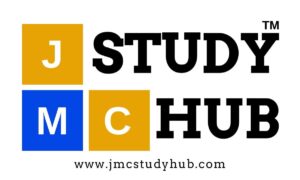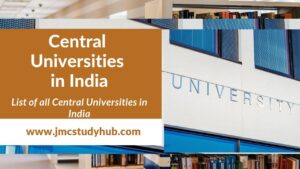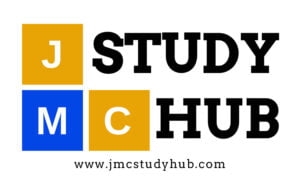Author: Ruchita Dubey, JMC Aspirants
In today’s digital age, when we’re in search of answers, ideas, or services, our go-to is usually a search engine. It has become an essential part of our daily lives, and businesses have caught on to its importance in their marketing strategies. Organic search is a valuable channel for marketers. That can be achieved with Search Engine Optimization (SEO).
What is Search Engine Optimization (SEO)?
SEO is the art and science of boosting a webpage’s ranking on search engines like Google. Since search is the primary way people discover content online, climbing higher in search engine rankings can lead to a significant increase in website traffic.
In the world of search engines, you’ll often find paid ads at the top of the results page, followed by what experts call “organic search results.” Traffic coming from SEO is commonly referred to as “organic search traffic” to distinguish it from paid search, known as Search Engine Marketing (SEM) or pay-per-click (PPC).
How Do Search Engines work?
The primary goal of any search engine is to satisfy searchers with the best results. To achieve this, search engines employ a three-step process:
- Crawling: Search engines like Google use computer programs known as “bots” to scan the web for new or updated pages. For a page to be discovered by Google, it needs at least one link pointing to it.
- Indexing: After discovering a page, Google analyzes its content to understand its purpose. This information is then stored in the Google Index, an extensive database of webpages.
- Serving Results: When a user enters a query, Google determines which pages are the most relevant and of the highest quality, ranking them in the Search Engine Results Page (SERP).
The Three Pillars of SEO
Three core metrics play a pivotal role in assessing a site’s quality and determining its rank:
- Links: Links from other websites are like votes of confidence in the eyes of search engines. Sites with numerous quality backlinks gain authority and enjoy higher rankings.
- Content: Search engines analyze webpage content to determine its relevance to specific search queries. Crafting content that aligns with popular keywords is a key SEO strategy.
- Page Structure: The structure of a webpage’s HTML code can influence a search engine’s evaluation. Using relevant keywords in the page’s title, URL, headers, and ensuring the site is easily crawlable are actions that enhance SEO.
SEO Techniques
To improve a site’s ranking, SEO experts employ various techniques:
- Keyword Research: Start by identifying the keywords your site already ranks for, what competitors rank for, and what potential customers are searching for. This informs content optimization and creation. There are several tools available online for keyword research like ahrefs keywords explorer, semrush, etc.
- Content Marketing: High-quality content is king in SEO. Create compelling content that caters to user needs, as it’s more likely to rank higher, be shared on social media, and attract valuable backlinks.
- Link Building: Acquiring quality backlinks from other websites is a key lever in SEO. Promote excellent content, reach out to webmasters, and build relationships to secure valuable links.
- On-Page Optimization: Optimize page elements like the URL, title tag, and header with relevant keywords. Meta tags, such as meta descriptions, can enhance click-through rates.
- Site Architecture Optimization: Internal links within your site matter too. Ensure key pages are well-connected and use relevant anchor text to improve page relevance.
There are some other terms that one must know about, they are:
a.) Search Engine Marketing (SEM): SEM refers to a digital marketing strategy that involves promoting websites or products by increasing their visibility in search engine results pages (SERPs) through paid advertising. It primarily includes activities such as pay-per-click (PPC) advertising, where advertisers bid on keywords to display their ads prominently when users search for related terms. SEM aims to drive traffic, increase brand visibility, and generate conversions through paid search advertising.
b.) Multi-Media Processing (MMP): MMP is a technology field that deals with working on different kinds of digital stuff like text, pictures, sounds, and videos. It’s about changing, organizing, and using these things in various ways, like making videos, sending pictures, or finding information online. MMP is important for things like making movies, managing digital files, and talking to people through video calls.
c.) Multi-Segment Marketing: Multi-Segment Marketing means dividing a big group of potential customers into smaller groups based on things like their age, interests, or where they live. Then, you make special marketing plans for each of these smaller groups to better meet their needs and make them want to buy your products or services. It’s like talking to different people in a way that makes sense to each of them.



















